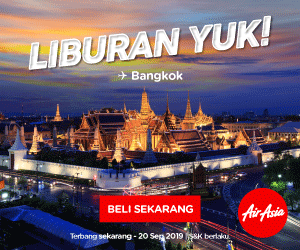In short, SEO drives two things — rankings and visibility. Both are responsible for delivering the main SEO objectives – traffic and conversions.
a. Rankings
This is a process that search engines use to determine where to place a particular web page in SERPs.
b. Visibility
This term describes how prominent a particular domain is in search engine results. With high visibility, your domain is prominent in SERPs. Lower search visibility occurs when a domain isn’t visible for many relevant search queries.
Search engines aim to provide users with the most relevant answers or information. Every time you use them, their algorithms choose pages that are the most relevant to your query. And then, rank them, displaying the most authoritative or popular ones first.
To deliver the right information to users, search engines analyze two factors:
a. Relevancy between the search query and the content on a page. Search engines assess it by various factors like topic or keywords.
b. Authority, measured by a website’s popularity on the Internet. Google assumes that the more popular a page or resource is, the more valuable is its content to readers.
So as to analyze all this information they use complex equations called search algorithms.
Google takes into account more than 200 different factors to help it determine the results for each query (Courtney Seiter, 2016). However, search engines keep their algorithms secret. But over time, SEOs have identified some of the factors they consider when ranking a page. We refer to them as ranking factors, and they are the focus of an SEO strategy.
To optimize a site, you need to improve ranking factors in three areas — technical website setup, content, and links.
1. Technical Setup
For your website to rank, three things must happen: First, a search engine needs find your pages on the Web. Then, it must scan them to understand their topics and identify their keywords. And finally, it needs to add them to its index — a database of all the content it has found on the web. This way, its algorithm can consider displaying your website for relevant queries.
Unfortunately, there is a catch. A web page looks different for you and the search engine. You see it as a collection of graphics, colors, text with its formatting, and links. To a search engine, it’s nothing but text.
As a result, any elements it cannot render this way remain invisible to the search engine. And so, in spite of your website looking fine to you, Google might find its content inaccessible. Let me show you an example.
That’s where technical setup, also called on-site optimization, comes in.
Additionally, the most important factors affecting it include:
a. Website Navigation and Links
Search engines crawl sites by following links. Search engine crawlers land on a page and use links to find other content to analyze. But as you’ve seen above, they cannot see images. So, set the navigation and links as text-only.
b. Simple URL Structure
Search engines don’t like reading lengthy strings of words with complex structure (Jami Oetting, 2018). So, if possible, keep your URLs short, for instance 3 to 5 words and separated by a hyphen (-). Set them up to include as little beyond the main keyword for which you want to optimize the page, as possible.
c. Page Speed
Search engines, use the load time — the time it takes for a user to be able to read the page — as an indicator of quality. Many website elements can affect it. Image size, for example. Use Google’s Page Speed Insights Tool for suggestions how to improve your pages.
A dead link sends a visitor to a non-existent page. A broken redirect points to a resource that might no longer be there. Both provide poor user experience but also, prevent search engines from indexing your content.
e. Sitemap and Robots.txt Files
A sitemap is a simple file that lists all URLs on your site. Search engines use it to identify what pages to crawl and index. A robots.txt file, on the other hand, tells search engines what content not to index (for example, specific policy pages you don’t want to appear in search.) Create both to speed up crawling and indexing of your content.
f. Duplicate Content
Pages containing identical or quite similar content confuse search engines. They often find it near impossible to determine what content they should display in search results. For that reason, search engines consider duplicate content as a negative factor. And upon finding it, can penalize a website by not displaying any of those pages at all.
g. Secure Site
Search engines prefer to see the entire web running HTTPS servers, in order to provide better security to web surfers. HTTPS encrypted all communications between browser and the website. So as to encourage webmasters making this happen, search engines reward sites that use HTTPS with a small ranking boost.
2. Content
Content helps gain greater search visibility. Here are two reasons why:
a. Content is what customers want when searching. The more contents you publish, the higher your chance for greater search visibility.
b. Search engines use content to determine how to rank a page.
While crawling a page, they determine its topic. Analyzing elements like page length or its structure helps them assess its quality. Based on this information, search algorithms can match a person’s query with pages they consider the most relevant to it.
The process of optimizing content begins with keyword research.
i. Keyword Research
SEO work starts with discovering what phrases potential buyers enter into search engines.
The process typically involves identifying terms and topics relevant to your business. Then, converting them into initial keywords. And finally, conducting extensive research to uncover related terms your audience would use.
With a list of keywords at hand, the next step is to optimize your content. SEOs refer to this process as on-page optimization.
ii. On-Page Optimization
On-page optimization, also called on-page SEO, ensures that search engines:
i. understand a page’s topic and keywords, and
ii. can match it to relevant searches.
Note, I said “page” not content. That’s because, although the bulk of on-page SEO work focuses on the words you use, it extends to optimizing some elements in the code.
Here’s a list of the most crucial on-page optimization actions to take.
iii. Keyword Optimization
First, ensure that Google understands what keywords you want this page to rank. To achieve that, make sure you include at least the main keyword in the following:
- Post’s Title: Google is known to put more value on words at the start of the headline.
- URL: Your page’s web address should include the keyword and also remove any stop words.
- H1 Tag: In most content management systems, this tag displays the title of the page by default. However, make sure that your platform doesn’t use a different setting.
- The First 100 Words (or the First Paragraph) of Content: Finding the keyword at the start of your blog post will reassure Google that this is the page’s topic.
- Meta-Title and Meta-Description Tags: Search engines use these two code elements to display their listings. They display meta-title as the search listing’s title. Meta-description provides content for the little blurb below it. They use both to understand the page’s topic further.
- Image File Names: Search engines can only see images' file names. So, make sure that at least one of the images contains the keyword in the file name.
- ALT Tags: The ALT tag is text browsers display instead of an image (for visually impaired visitors.) However, since ALT tag resides in the image code, search engines use it as a relevancy signal as well.
- Add Semantic Keywords — variations or synonyms of your keyword. Google and other search engines use them to determine a page’s relevancy better. Let me illustrate this with an example. Let’s say, your main keyword is “Apple.” But do you mean the fruit or the tech giant behind the iPhone? The choice what queries to rank it for would immediately become obvious. That’s what semantic keywords do. Add them to ensure that your page doesn’t start showing up for irrelevant searches.
iv. Non-Keyword-Related On-Page Optimization Factors
The factors below help confirm a page’s credibility and authority too:
- External Links: Linking out to other, relevant pages on the topic helps Google determine its topic further. Plus, it provides a good user experience.
- Internal Links: Internal links help reduce your bounce rate, assist with navigation and entice your readers to explore relevant aspects of your blog and website. Those links help you boost rankings in two ways. First, they allow search engines to find and crawl other pages on the site. Second, they show semantic relations between various pages, helping to determine its relevance to the search query better. As a rule, you should include at least 2-4 internal links per blog post.
- Content’s Length: Long content typically ranks better. That’s because, if done well, a longer blog post will always contain more exhaustive information on the topic.
- Multimedia: Although not a requirement, multimedia elements like videos, diagrams, audio players can signal a page’s quality. It keeps readers on a page for longer. And in turn, it signals that they find the content valuable and worth perusing.
- Frequency of Update: Search engines look for websites that are regularly updated. Sites with dynamic content often rank higher than those with static content. The more often you update your content, the more frequently Google will send their bots over to scan and index your site. Frequent blogging also helps you get indexed more often. Each time you add a new blog entry, you are creating a new page on your site for search engines to scan and index. In a nutshell, more indexed pages are good for SEO.
3. Links
No page will rank without two factors — relevance and authority. In their quest to provide users with the most accurate answers, Google and other search engines prioritize pages they consider the most relevant to their queries but also, popular.
The first two areas — technical setup and content — focused on increasing relevancy. Links, however, are responsible for popularity.
Here’s what SEOs mean when talking about links.
i. What Is a Backlink?
Links, also called backlinks, are references to your content on other websites. Every time another website mentions and points their readers to your content, you gain a backlink to your site.
Google uses quantity and quality of links like this as a signal of a website’s authority. Its logic behind it is that webmasters would recommend a popular and high-quality website more often than a mediocre one.
On top of that, links quality can impact your rankings as well.
ii. Links Quality Factors
Low quality or suspicious links — for example, ones that Google would consider as built deliberately to make it consider a site as more authoritative might reduce your rankings.
That’s why, when building links, SEOs focus on generating the highest quality references possible.
SEOs discovered some of links quality factors:
a. The Popularity of a Linking Site: Any link from a domain that search engines consider an authority will naturally have high quality. In other words, links from websites that have good quality links pointing to them, work better.
b. Topic Relevance: Links from domains on a topic similar to yours will carry more authority than those from random websites.
c. Trust in a Domain: Search engines also assess a website’s trust. Links from more trustworthy sites will always impact rankings better.
iii. Link Building
In SEO, we refer to the process of acquiring new backlinks as link building. To generate quality links, you need to come up with a link building strategy. The links must pass various quality criteria. Plus, it can’t be obvious to search engines that you’ve built them deliberately.
Here are some strategies to do it:
- Editorial, Organic Links. These backlinks come from websites that reference your content on their own.
- Outreach. In this strategy, you contact other websites for links. This can happen in many ways. You could create an amazing piece of content, and email them to tell them about it. In turn, if they find it valuable, they’ll reference it. You can also suggest where they could link to it.
- Guest Posting. Guest posts are blog articles that you publish on third-party websites. In turn, those companies often allow including one or two links to your site in the content and author.
- Profile Links. Many websites offer an opportunity to create a link. Online profiles are a good example. Often, when setting up such profile, you can also list your website there as well. Not all such links carry strong authority, but some might.
- Competitive Analysis. Finally, many SEOs regularly analyze their competitors’ backlinks to identify those they could recreate for their sites too.
Web crawler is a program that search engines use to browse through the internet in a systematic way. The web crawler looks at the keywords in the pages, the kind of content each page has and the links, before returning the information to the search engine. This process is known as Web crawling.
A web crawler gathers pages from the web and then, indexes them in a methodical and automated manner to support search engine queries. Crawlers would also help in validating HTML codes and checking links.
These web crawlers go by different names, like bots, automatic indexers and robots. Once you type a search query, these crawlers scan all the relevant pages that contain these words and turn it into a huge index. For example, if you are using Google’s search engine, then the crawlers would go through each of the pages indexed in their database and fetch those pages to Google’s servers. The web crawler follows all the hyperlinks in the websites and visits other websites as well.
There are many forms of webcrawling bots, and they don’t always work alike. One bot can give you the high ranking, but another one may not.
Measuring SEO success means tracking data about traffic, engagement, and links. And though, most companies develop their own sets of SEO KPIs (key performance indicators), here are the most common ones:
- Organic traffic growth
- Keyword rankings
- Conversions from organic traffic
- Average time on page and the bounce rate
- Top landing pages attracting organic traffic
- Number of indexed pages
- Links growth (including new and lost links)
Local SEO
Local SEO refers to the process of ‘optimizing’ your online presence to attract more business from relevant local searches. If you run a local business, Google also lets you position it in front of potential customers in your area, specifically. But for that, you use local SEO.
Search engines follow similar principles for both local and global rankings. But given that they position a site for specific, location-based results, they need to analyze some other ranking factors too.
Local search results look different too:
- They appear only for searches with a local intent (for example, “restaurant near me” or when a person clearly defined the location.)
- They contain results specific to a relevant location.
- They concentrate on delivering specific information to users that they don’t need to go anywhere else to find.
- They target smartphone users primarily as local searches occur more often on mobile devices.
For example, here are local results Google displays for the phrase “Best Restaurant in ShenZhen”.
These search results contain a list of restaurants in the area, a map to show their locations, and additional information such as business name, description, image, opening hours, star reviews, address, phone number or website address.
Local Search Ranking Factors
When analyzing local websites, Google looks at the proximity to a searcher’s location. With the rise of local searches containing the phrase, “near me,” it’s only fair that Google will try to present the closest businesses first.
Keywords are essential for local SEO too. However, one additional element of on-page optimization is the presence of a company’s name, address, and phone number of a page. In local SEO, we refer to it as the NAP.
The search engine needs a way to assess the company’s location. Google assesses authority in local search not just by links. Reviews and citations (references of a business’s address or a phone number online) highlight its authority too.
Finally, the information a business includes in Google My Business — the search engine’s platform for managing local business listings plays a huge part in its rankings. It will ensure that your important details such as address, hours, phone number, directions and website are listed on Google Maps. Customers can also leave you reviews here. This is crucial because businesses with many reviews tend to rank higher in Google Maps.
What Is Black Hat SEO?
Black hat SEO is a set of unethical practices to improve rankings of a website in the search engine results page. Black hat practices aim at manipulating search engine algorithms using strategies against search engine guidelines. The most common black hat techniques include keyword stuffing, cloaking (hiding keywords in code so that users don’t see them, but search engines do,) and buying links.
So, why would someone use black hat SEO? For one, because, often, ranking a site following Google’s guidelines takes time. Long time, in fact.
Black hat strategies let you cut down the complexity of link building. For example, keyword stuffing allows to rank one page for many keywords, without having to create more content assets. However, getting caught often results in a site being completely wiped out from search listings.
Without actively positioning its content in search results, no business can survive long. By increasing your search visibility, you can bring more visitors, and in turn, conversions and sales. And that's well worth the time spent becoming an expert in SEO.
Organic SEO is absolutely a marathon, not a sprint. It can takes weeks and months for Googlebot to start displaying your site in relevant SERPs and even once you’re ranking well, you’ll need to continue to invest in SEO to maintain your rank.
Once you’ve risen through the ranks, the return on your invested time and money is incredible. For every click on a paid search result, the organic results generate 8.5 clicks. And the higher you rank, the greater the impact.
Edited by: 浪子
Bibliography
Jami Oetting. (2018). The Ultimate Guide to SEO in 2018. Retrieved from
https://blog.hubspot.com/marketing/seo
Zara Burke. (n.d.). 6 Steps to Help Your Blog Post Climb The Google Ranks. Retrieved from
https://digitalmarketinginstitute.com/blog/6-steps-help-blog-post-climb-google-ranks
Cabot Technology Solution. (2017). Web Crawlers — Everything You Need to Know. Retrieved from
https://medium.com/@cabot_solutions/web-crawlers-everything-you-need-to-know-6dce26ee8ad8
Business Matters. (2018). SEO Beginner’s Guide: Know the Importance of Search Engine Optimization.
Retrieved from https://www.bmmagazine.co.uk/marketing/seo-guide-know-of-search-engine-optimization/
Jeff Goins. (n.d.). 12 Important SEO Tips for Your Website. Retrieved from
https://goinswriter.com/website-seo-tips/
Search Engine Land. (n.d.). Chapter 3: Site Architecture & Search Engine Success Factors. Retrieved from
https://searchengineland.com/guide/seo/site-architecture-search-engine-ranking
Comodo CA. (n.d.). What is HTTPS? Retrieved from
https://www.instantssl.com/ssl-certificate-products/https.html
Ogi Djuraskovic & FirstSiteGuide Team. (2018). WordPress SEO for Beginners. Retrieved from
https://firstsiteguide.com/wordpress-seo/
Courtney Seiter. (2016). The Complete Beginner’s Guide to SEO. Retrieved from
https://blog.bufferapp.com/beginners-guide-to-seo#
Wix SEO Wiz. (n.d.). Why Does SEO Matter? Retrieved from
https://seoguide.wix.com/en/article/why-does-seo-matter
Wix SEO Wiz. (n.d.). Fresh Content: The Key to SEO. Retrieved from
https://seoguide.wix.com/en/article/fresh-content-the-key-to-seo
Wix SEO Wiz. (n.d.). Get on the Map with Local SEO. Retrieved from
https://seoguide.wix.com/en/article/get-on-the-map-with-local-seo
Maros Kortis. (2018). Learn SEO in 2018. Retrieved from
https://mangools.com/blog/learn-seo/
Joshua Hardwick. (2018). Local SEO: A Simple (But Complete) Guide. Retrieved from
https://ahrefs.com/blog/local-seo/
The Ultimate Guide to Search Engine Optimization (SEO)
 Reviewed by 浪子
on
April 20, 2019
Rating:
Reviewed by 浪子
on
April 20, 2019
Rating:
 Reviewed by 浪子
on
April 20, 2019
Rating:
Reviewed by 浪子
on
April 20, 2019
Rating:






























